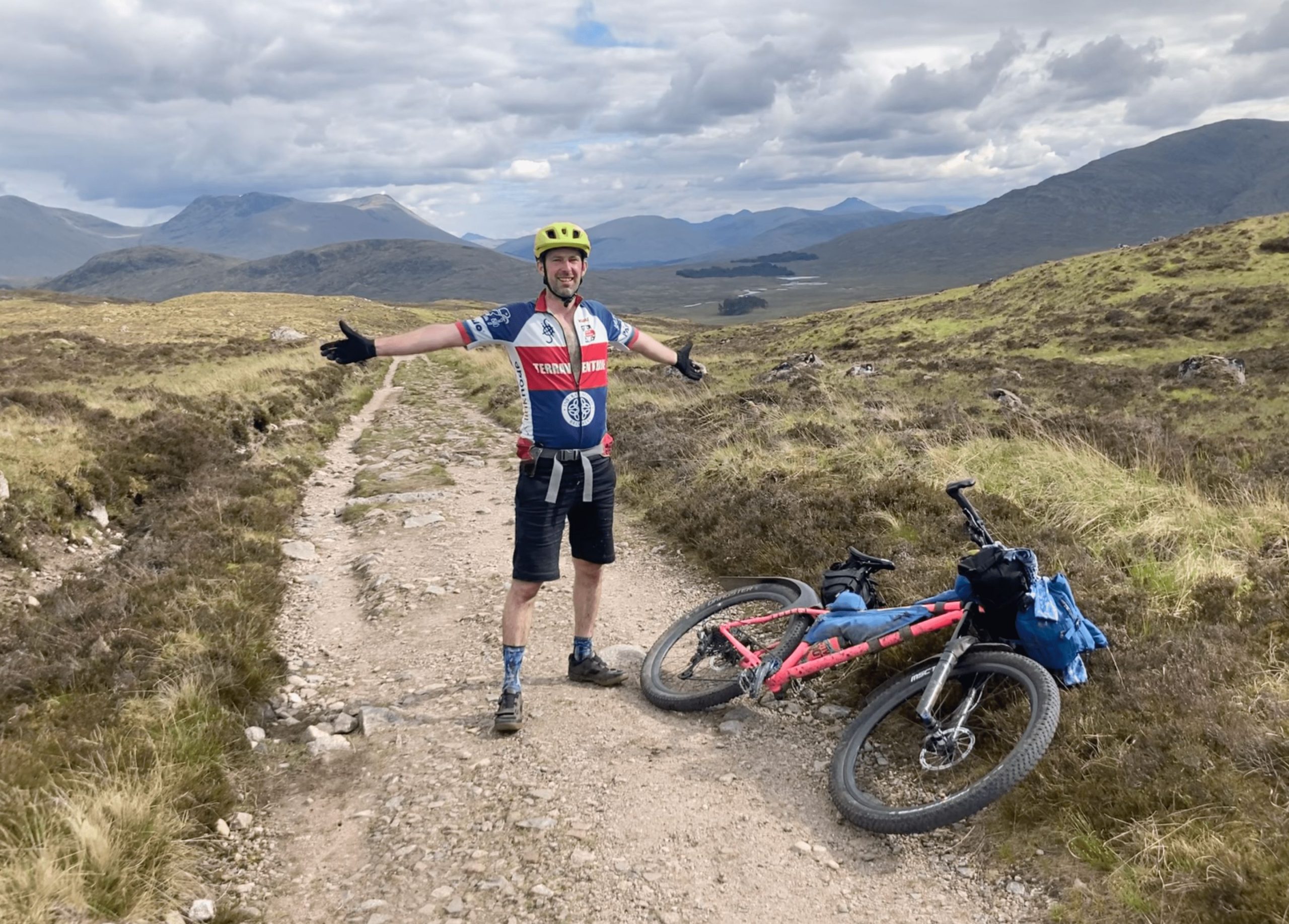No products in the basket.
Bikes are the ultimate vehicle of freedom aren’t they? The freedom to explore and the freedom to be. Throw in a tent, some provisions and some like minded folk, and you have yourself a bike packing rally. This spring, we took part in a unique event, and the first of it’s kind in Scotland, the Roam Scotland Rally.
This was inspired in part by the Torino Nice Rally and in part, by Scotland’s right to roam. The first Roam Scotland Rally took place in 2019, with a small hiatus for Covid, we signed ourselves up for the next one in May this year. For 2022, the Grand Depart was at Lamlash on Arran with around 50 intrepid bike packers from as far flung as Shetland to London in the UK, and Holland, Belgium, Canada and Germany for our international riders.
To roam is to move about or travel aimlessly or unsystematically, especially over a wide area. When this wide area takes you through stunning and rugged parts of the Scottish West Coast, Highlands and Islands, you want a capable, dependable steed that will cover large distances day after day whilst defying you not to have a ridiculous, goofy grin on your face as you fly down long, snaking hill passes. A bike that will keep rolling that front wheel up and over craggy, bouldery sections of the West Highland Way as perplexed hill walkers look on in slight disbelief! Most of the Roamers chose gravel bikes, but for us it was a no brainer that this would be a job for our mile-munching Moxies! The clean lines of our steel hardtail frames affords us plenty of space to fit in bar, frame and saddle bags to carry all of our kit so that we can be self sufficient for the trip.
Although it is quite acceptable for Roamers to stay in hotels or B&Bs along the way if they like, for us, self sufficiency means carrying our tent/camping gear and other essentials. These include items such as our water filter, copious amounts of Smidge to keep the pesky midges at bay and a frame bag often bulging with flapjack and bananas! We knew that to be able to cover the daily distances for the long route each day (averaging 100km) we would need to travel light, so for the first time ever, we left behind our camp stove. This sacrifice shows you just how seriously we were taking this challenge as it meant starting the day without coffee. Without coffee!! It also meant that we were able to trim the rolling weight of the loaded bike and kit to around 26kg.
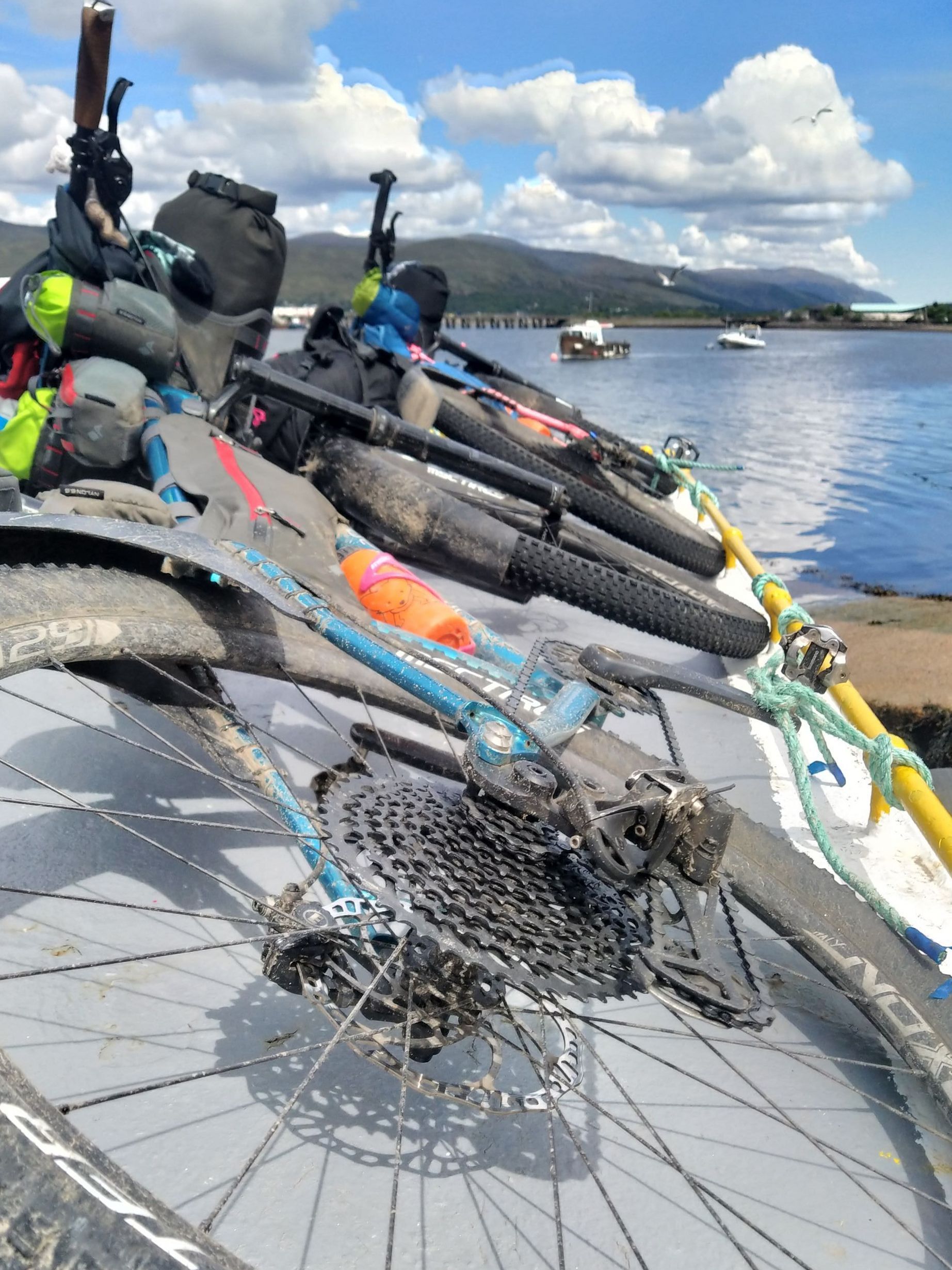
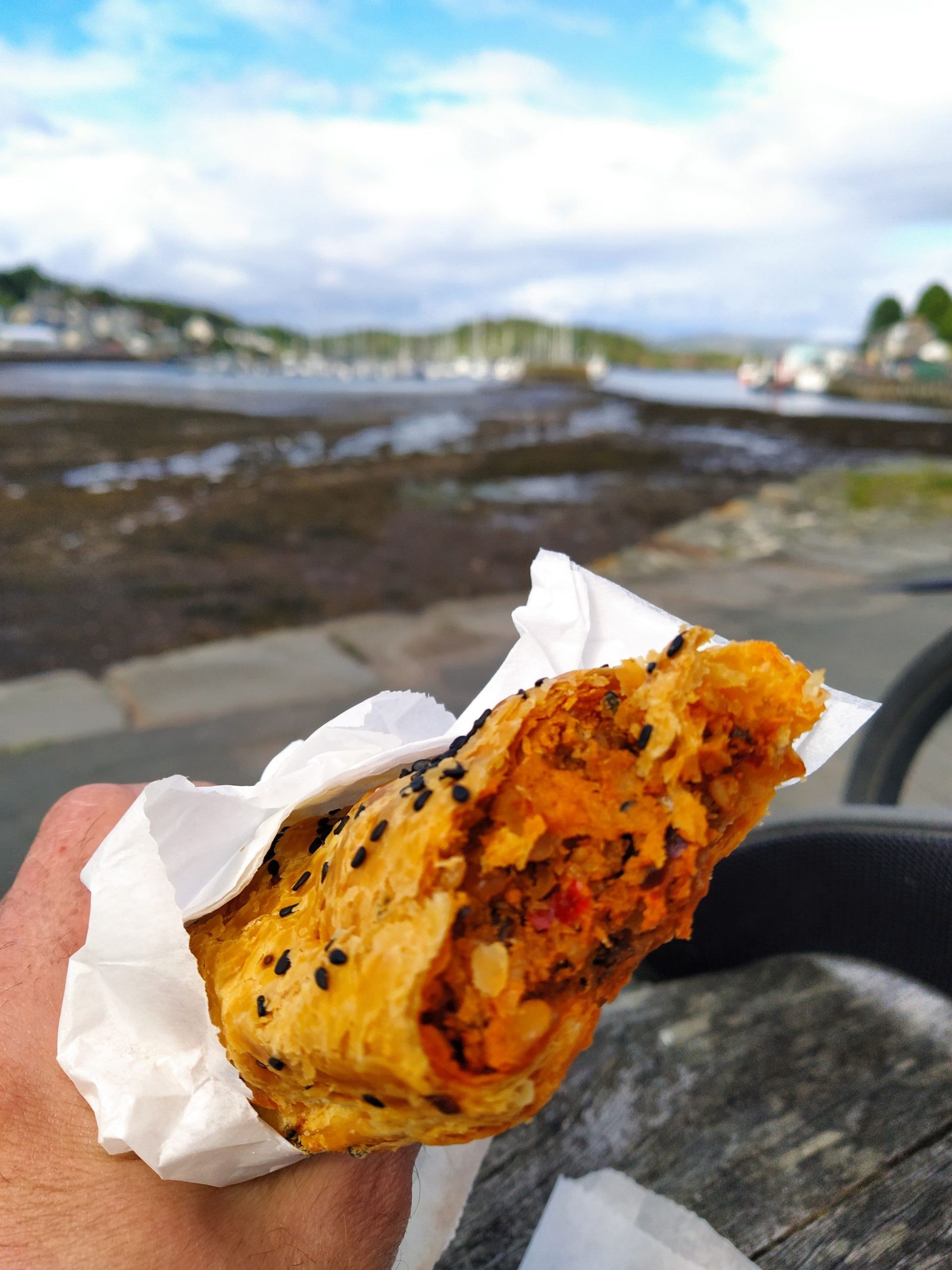
By taking on a challenge that you have hope, but no certainty of successful completion, you can end up surprising yourself with weird and wonderful solutions to the unique scrapes you might find yourself in! Somehow, I managed to damage the master cylinder for my front brake so that it leaked out all of the hydraulic brake fluid, leaving me with no front brake. The back brake alone could not cope with the weight of my fully loaded bike on the long descents. Back brake duly cooked, I had only my feet left for brakes!
We were many miles from the nearest bike shop, so needed to conjure a better solution than my size 8 soles for brakes. Whilst there was no bike shop, there was a small cafe so using the resources we had at our disposal, Keith came up with a slightly alarming, but none-the-less effective, braking bodge! He reappeared from the cafe with a cunning plan and a cup of olive oil, much to the amusement and concern of our fellow roamers who had congregated at the cafe. The next tricky technicality was how to inject said oil into the tiny hole on my brake cylinder. Again, the universe provided, with a piece of stout cardboard from the cafe’s recycling bin folded into a v shaped funnel. Carefully, we were able to drip enough olive oil into the system that I had solid, functioning brakes once more.
Returning inside the cafe to buy us some celebratory snacks, the lady who had dispensed the olive oil voiced her concern over our Heath Robinson brake fix and wanted reassurances that we would go directly to the nearest bike shop. It turned out that this was not necessary as my olive oil worked a treat for the remaining 400km of the trip!
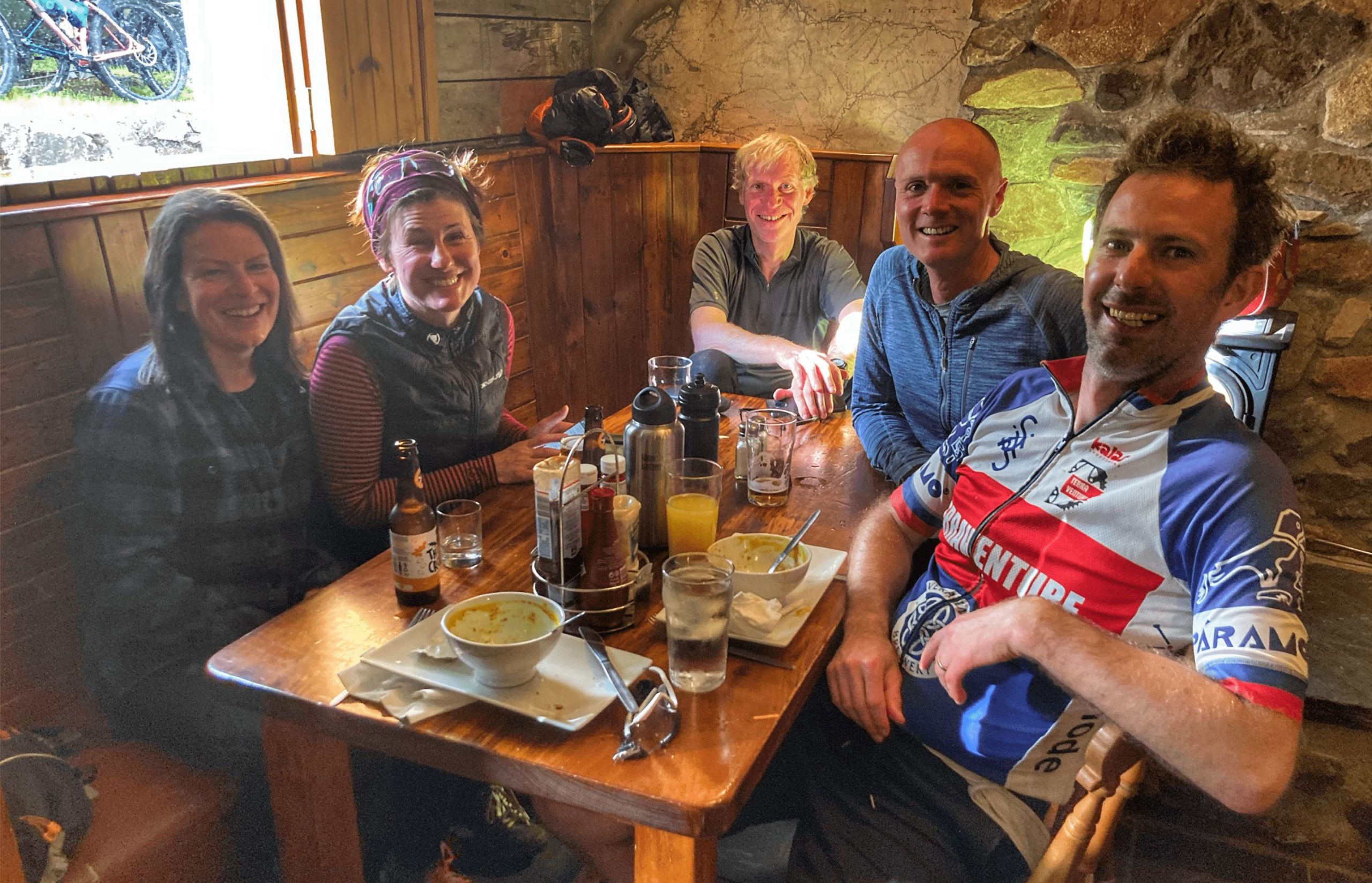
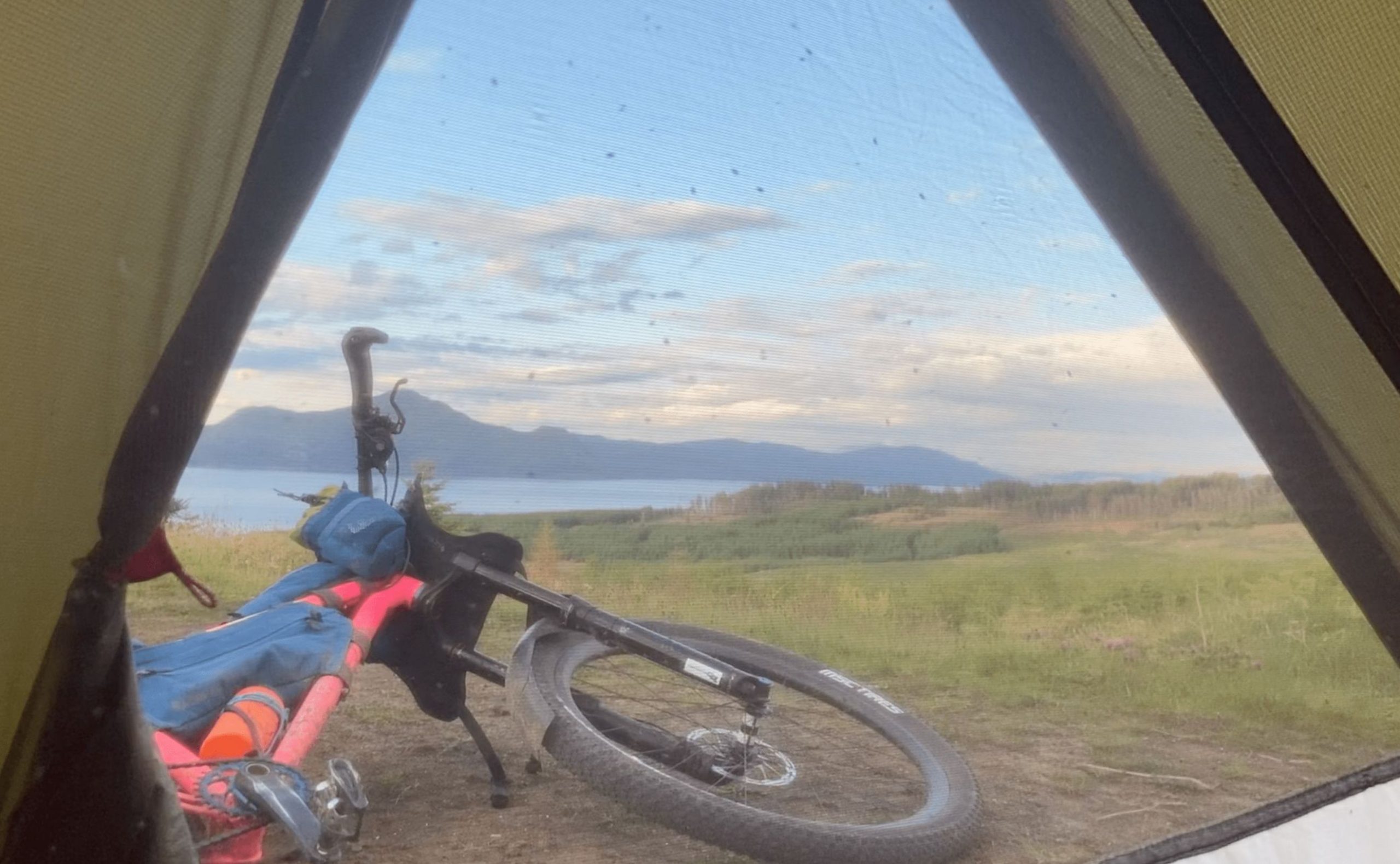
Problems aside, I love the simplicity and the daily rhythm of bike packing. Pedal, eat, sleep, repeat. Pedal, eat, sleep, repeat. It is a total reset and a tonic for the complexities and distractions of regular life. Time is of little consequence and is more governed by the rising and setting of the sun than by the time piece on your wrist. We tended to rise about 5,30am as the sun started to warm our tent. The midgies are out in force, so we quickly pack up the tent and would often have breakfast on the hoof, out of the reach of the biting blighters! My bar roll and bag make quite a good breakfast table for my spread of banana, granola bar and milkshake. By rising early, we get a good head start too. Most days the gravel bikes cover the ground fast, so would catch us up at some point and we would have other riders for a spot of company and banter. The miles fall away quickly whenever you are chatting. Sometimes it genuinely would make us faster too. Our 29er Moxies could masquerade for a bit as racey gravel bikes as we would join the efficiency of an impromptu peloton and push our heart rates for as long as we felt like it!
Mostly we pottered along at a more relaxed pace. This allowed us to drink in the constant supply of incredible views, take pictures and enjoy some of the wildlife around us. We passed very close to a herd of deer plus geese and goslings on a coastal estate. I nearly rode over a slow worm and although we missed the otters and seals we made up for this by spotting a golden eagle on Mull, although this is not so hard to do as Mull has the highest density of nesting golden eagles in Europe!
There was one section of the ride that was billed as a “rough stuff” alternative to the main route. For this section, the only other mountain bike on the trip teamed up with our pair of Moxies to take on Glen Kinglass to Glencoe. This was probably the most enjoyable day of the whole trip for us. We were truly in our element, concentrating on line choice as we rode through rough, loose, bouldery sections or revelling in the riding over slabs of granite. It was lovely for me to get the chance to know a fellow, female mountain biker, and one who also shares my delight in wild swimming! Keith and I had both developed a bit of heat and swelling in our achilles tendons by this stage, so planned to submerge them in the cold river water for a bit. Fellow rider, (also Lindsay) had a better idea though and suggested full body submersion by the falls and pools further along the route. Total heaven on this hot and sunny day!
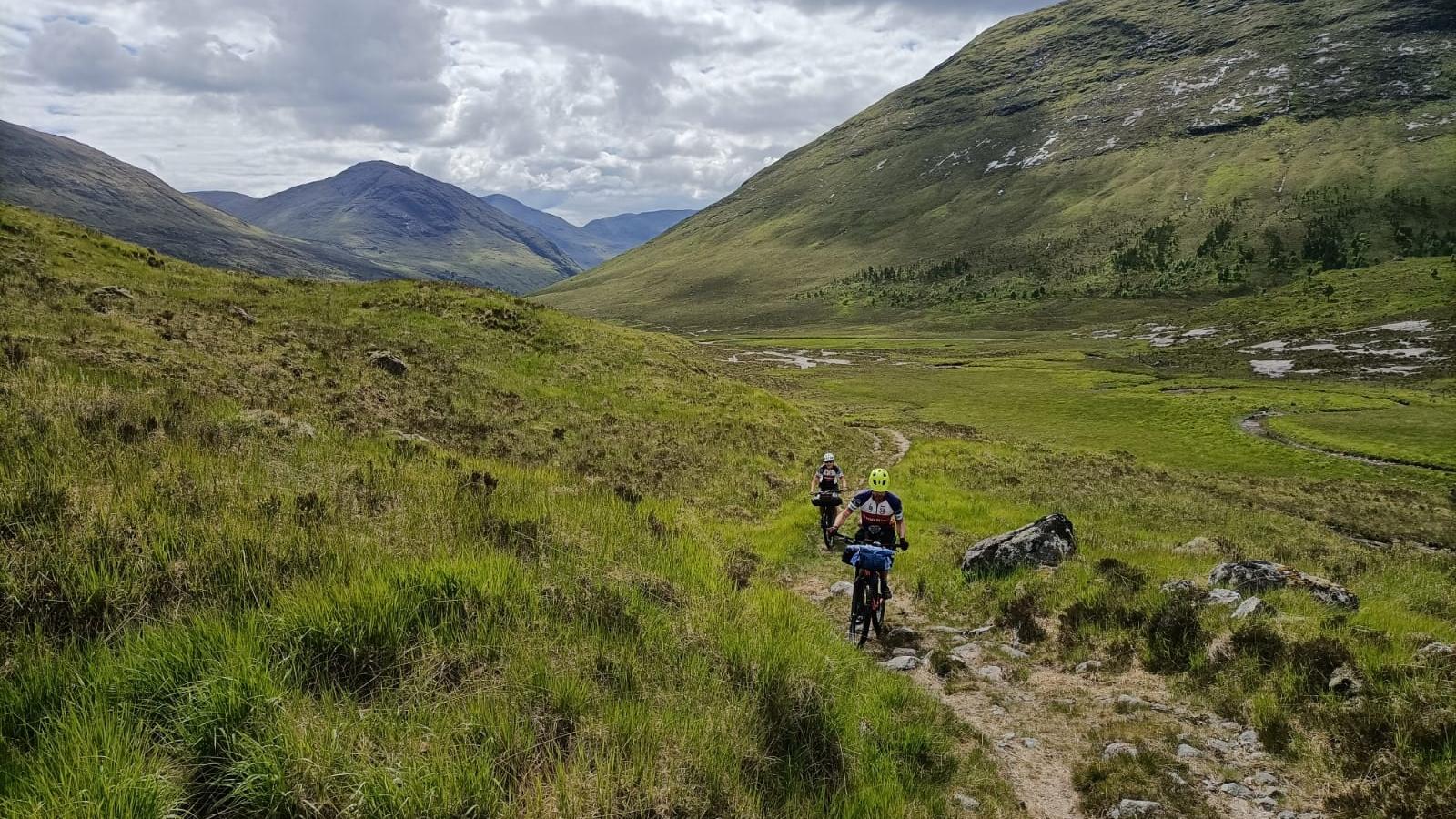
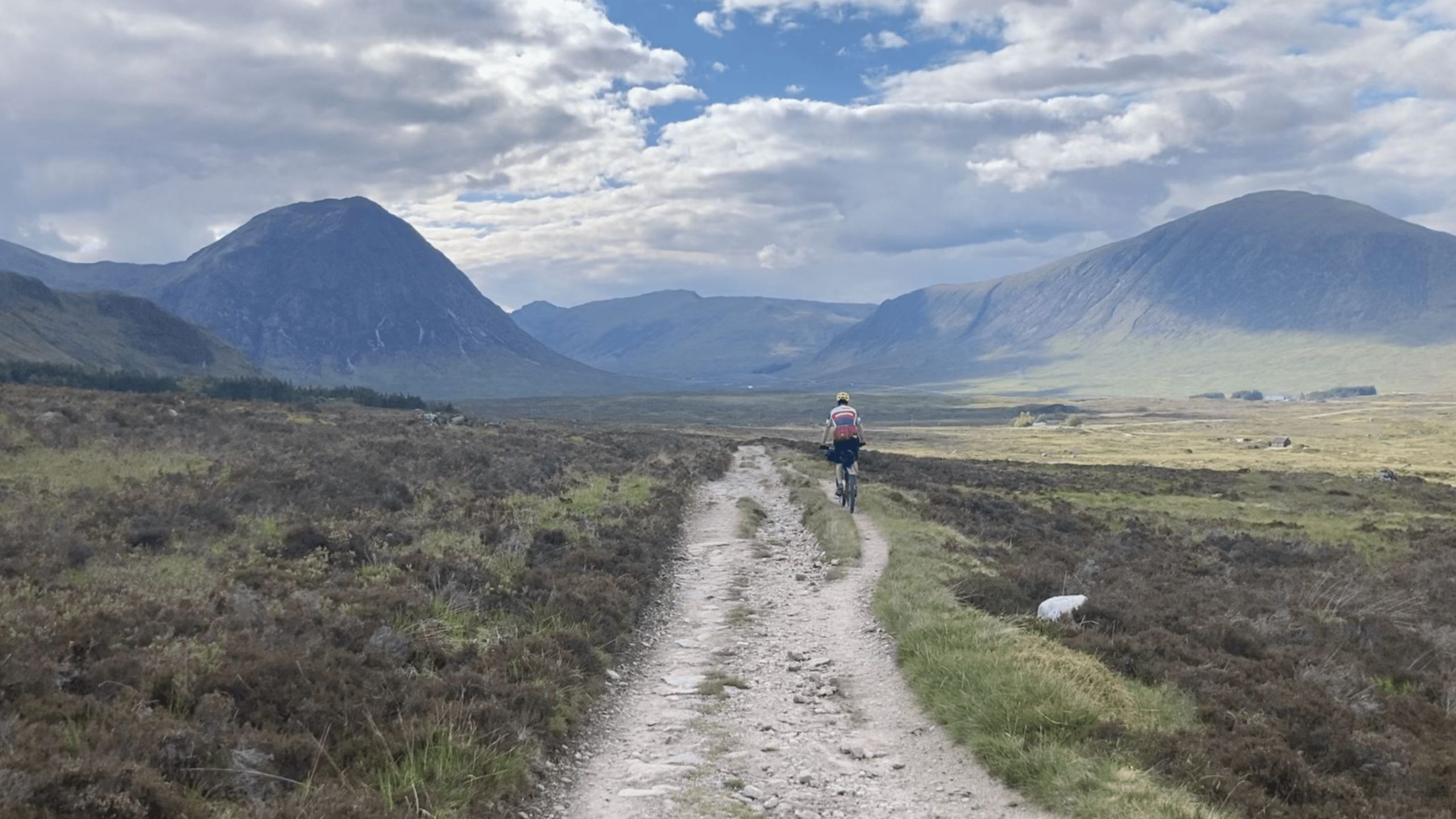
Keeping up with the laundry is just one small part of the daily maintenance that is so essential to keeping bikes and bodies happy for longer multi day trips. We tend to ride in one set of kit, carrying a spare set to wear whilst washing and drying the first. Drying may be air drying with a cord washing line at camp or clothes secured to bar/tail bags with elastic when we get dry riding days. If it is wet, the only solution is to put the damp laundry onto your warm body inside your sleeping bag, and by morning it will be pretty much dry. In this way, we can have fresh shorts each day which is a key part of our strategy for avoiding saddle sores.
It may be the physiotherapist in me, but I am also pretty determined about stretching regularly to keep the body moving well. Tight hip flexors and hamstrings are a perennial problem for cyclists. These can be stretched out from a standing position, but we also made use of our tent’s ground sheet to allow us more of a full body stretch. Yoga in a midge net is quite the look!
Apart from brake servicing, there was rudimentary bike maintenance to be done. We carried a cleaning rag which allowed us to wipe the worst of the muck and grit off the chains each day before applying a squirt of good quality chain oil.
Our various strategies paid off this time, and we managed to complete the long route every day meaning we rode 700km in 7 days, fully self supported on mountain bikes and climbing more than the height of Mount Everest from sea level over the course of the trip. What did we learn, apart from the fact that hydraulic brake fluid may be overrated?! We discovered that Mull has it’s very own hill classification system! I am vaguely familiar with the different category climbs that you hear about on the Tour de France commentary. Mull does it differently and I think more poetically. You can tell how brutal a climb is by the number of yellow grit bins there are along it! We also learned that bike packers are a really friendly and interesting bunch and have already been inspired to further adventures by some of the new friends we made along the way!


